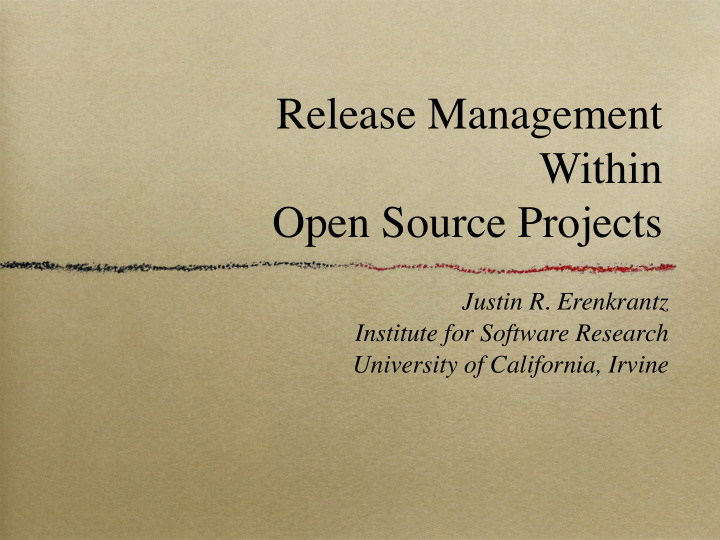



Release Management Within Open Source Projects Justin R. Erenkrantz Institute for Software Research University of California, Irvine
Importance Release management focuses on delivery “Getting software to user” Directly user-focused task Lots of variations between projects Need for a taxonomy Process and tools are still evolving
Decentralization & Distribution Compensating for decentralization Users may desire canonical releases Creation of virtual organizations Compensating for distribution Global reach Often no contact for assistance
Classification of Policies Responsibility - who? Acceptance - when? Versioning - what? Distribution - where? Binaries - how?
Examination of Three Projects Linux Kernel Subversion Apache HTTP Server Chosen for variety Directly involved in two of these projects
Linux Kernel Highly centralized process Source tree separated into branches Multiple active branches at one time Dedicated release manager per branch Complete authority
Linux Kernel Extensive use of release candidates Stable branches, unstable branches Releases mirrored on kernel.org via FTP No official packaging contributions Source only Others provide binaries
Subversion Version control system Principal funder is CollabNet CollabNet employees did releases Now have a volunteer release manager Milestones still determined by CollabNet
Subversion Must pass automated test suite Not yet at 1.0 release Centralized download location Users may contribute binaries
Apache HTTP Server Decentralized authority shared Committers volunteer to conduct release Releases do not have a formal schedule Three committers must approve release
Apache HTTP Server Automated test suite available Stable and unstable versions Distributed by mirrors Custom download system Only committers can contribute binaries
Conclusions Core organizational structure dominates Room for improvements Linux: Testing Subversion: Scalability Apache: Frequency
Recommend
More recommend